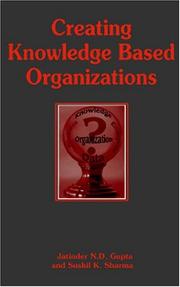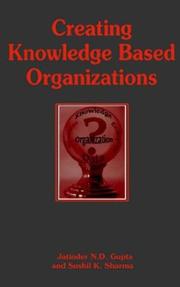| Listing 1 - 8 of 8 |
Sort by
|
Book
ISBN: 1634851455 9781634851459 9781634851343 163485134X Year: 2016 Publisher: New York Nova Biomedical
Abstract | Keywords | Export | Availability | Bookmark
 Loading...
Loading...Choose an application
- Reference Manager
- EndNote
- RefWorks (Direct export to RefWorks)
Radioisotopes in medical diagnosis. --- Diagnostic radioisotopes --- Radiodiagnosis --- Radioisotopes --- Diagnosis --- Nuclear medicine --- Diagnostic use
Book
ISBN: 1634831012 Year: 2015 Publisher: Hauppauge, New York : Nova Science Publishers, Incorporated,
Abstract | Keywords | Export | Availability | Bookmark
 Loading...
Loading...Choose an application
- Reference Manager
- EndNote
- RefWorks (Direct export to RefWorks)
Soldiers --- Veterans --- Stress (Psychology) --- Stress management. --- Post-traumatic stress disorder --- Mental health --- Treatment.
Book
ISBN: 3319969714 3319969706 Year: 2018 Publisher: Cham : Springer International Publishing : Imprint: Springer,
Abstract | Keywords | Export | Availability | Bookmark
 Loading...
Loading...Choose an application
- Reference Manager
- EndNote
- RefWorks (Direct export to RefWorks)
This book covers broad areas in the conservation of microorganisms. It addresses the short, medium and long-term preservation of agriculturally important microorganisms, as well as culture collections and their roles. The respective chapters address topics such as conventional approaches to bacterial, fungal and algal preservation, as well as methods and strategies for preserving recalcitrant microorganisms. Readers will also find the latest insights into the preservation of vesicular-arbuscular (VA) fungi and ecology, diversity and conservation of endophytes, and entamopathogenic fungi. Microbes of animal and dairy origin, their preservation and biosafety issues are also explored. Microorganisms are the silent and unseen majority of life on Earth, and are characterized by a high degree of genetic and metabolic diversity. It is well documented that no branch of science or society is unaffected by microbial interventions. Researchers have documented microorganisms from such extreme and unique environments as deserts and hydrothermal vents, and with specific traits that are currently being exploited in agriculture, industry, medicine and biotechnological applications. Such great potential can only be found in microorganisms. The aim of this book – the first entirely devoted to the conservation of microorganisms, and to regulatory mechanisms for access and benefits sharing as per Biological Diversity (BD) Act 2002 – is to promote awareness of our world’s microbial wealth, and to introduce readers to strategies and methodologies for the conservation of microorganisms, which could ultimately save human life on Earth.
Microbiology. --- Microbial ecology. --- Biotechnology. --- Botany. --- Ecology. --- Microbial Ecology. --- Plant Sciences. --- Geoecology/Natural Processes. --- Balance of nature --- Biology --- Bionomics --- Ecological processes --- Ecological science --- Ecological sciences --- Environment --- Environmental biology --- Oecology --- Environmental sciences --- Population biology --- Botanical science --- Phytobiology --- Phytography --- Phytology --- Plant biology --- Plant science --- Natural history --- Plants --- Chemical engineering --- Genetic engineering --- Environmental microbiology --- Microorganisms --- Ecology --- Microbiology --- Microbial biology --- Plant science. --- Geoecology. --- Environmental geology. --- Geoecology --- Environmental protection --- Physical geology --- Floristic botany
Digital
ISBN: 9783319969718 Year: 2018 Publisher: Cham Springer International Publishing
Abstract | Keywords | Export | Availability | Bookmark
 Loading...
Loading...Choose an application
- Reference Manager
- EndNote
- RefWorks (Direct export to RefWorks)
This book covers broad areas in the conservation of microorganisms. It addresses the short, medium and long-term preservation of agriculturally important microorganisms, as well as culture collections and their roles. The respective chapters address topics such as conventional approaches to bacterial, fungal and algal preservation, as well as methods and strategies for preserving recalcitrant microorganisms. Readers will also find the latest insights into the preservation of vesicular-arbuscular (VA) fungi and ecology, diversity and conservation of endophytes, and entamopathogenic fungi. Microbes of animal and dairy origin, their preservation and biosafety issues are also explored. Microorganisms are the silent and unseen majority of life on Earth, and are characterized by a high degree of genetic and metabolic diversity. It is well documented that no branch of science or society is unaffected by microbial interventions. Researchers have documented microorganisms from such extreme and unique environments as deserts and hydrothermal vents, and with specific traits that are currently being exploited in agriculture, industry, medicine and biotechnological applications. Such great potential can only be found in microorganisms. The aim of this book – the first entirely devoted to the conservation of microorganisms, and to regulatory mechanisms for access and benefits sharing as per Biological Diversity (BD) Act 2002 – is to promote awareness of our world’s microbial wealth, and to introduce readers to strategies and methodologies for the conservation of microorganisms, which could ultimately save human life on Earth.
General microbiology --- General ecology and biosociology --- Plant physiology. Plant biophysics --- Botany --- Biotechnology --- systematische plantkunde --- algen --- microbiologie --- biotechnologie --- ecologie --- botanie

ISBN: 1591401623 Year: 2004 Publisher: Hershey, Pa IDEA Group
Abstract | Keywords | Export | Availability | Bookmark
 Loading...
Loading...Choose an application
- Reference Manager
- EndNote
- RefWorks (Direct export to RefWorks)

ISBN: 1591402190 Year: 2004 Publisher: Hershey Idea group Publ.
Abstract | Keywords | Export | Availability | Bookmark
 Loading...
Loading...Choose an application
- Reference Manager
- EndNote
- RefWorks (Direct export to RefWorks)
Intellectual capital --- Knowledge management --- Organizational change --- Organizational learning --- Management
Digital
ISBN: 9789811958724 9789811958717 9789811958731 9789811958748 Year: 2022 Publisher: Singapore Springer Nature
Abstract | Keywords | Export | Availability | Bookmark
 Loading...
Loading...Choose an application
- Reference Manager
- EndNote
- RefWorks (Direct export to RefWorks)
This edited book volume aims to bringing out a comprehensive collection of latest information and developments on the management of biotic stresses by the use of rhizospheric microbes across the globe. The main focus of this book is to address the scientific and practical significance of rhizosphere microbes in biotic stress management. The microbial communities in the rhizosphere ecosystem play multitude of microbe-microbe, microbe-insect/pest and plant-microbe interactions and they have not yet been fully exploited to gain benefits in this field as well as to achieve sustainability in agriculture. Among the more recent strategies, stress tolerance/resistance induced by environment-friendly elicitors of microbial origin and/or rhizosphere microorganisms has emerged as a promising supplement in the approaches to crop protection. The proposed book entitled "Rhizosphere Microbes: Biotic Stress Management" is pertinent to rhizospheric microbe-mediated biotic stress management covering all spheres of biotic stress tolerance viz., bio-resources, diversity, ecology, and functioning of microbial bio-control agents, host-parasite interaction, strategies to characterize microbial bioinoculants, interactions of rhizosphere microbes by developing a fundamental understanding of the microbial communities, exploration of the diverse roles of microbes and microbial communities and their role in biotic stress tolerance, microbe-mediated mitigation of biotic stresses, quorum sensing, microbial signalling and cross-talk in the rhizosphere, biofilm formation, cell-to-cell communication, role of microorganisms in ecosystems functioning under various biotic stress conditions, application of microbial bio-pesticides, molecular studies using microbial systems, etc. This book is of interest to teachers, researchers, crop protection scientists, capacity builders and policymakers. Also the book serves as additional reading material for under-graduate, post-graduate, and post-doctorate fellow of agriculture, forestry, ecology, life science, and environmental sciences. National and international agricultural scientists, policy makers will also find this to be a useful read.
General microbiology --- General ecology and biosociology --- microbiologie --- ecologie
Multi
ISBN: 9789811941245 9789811941238 9789811941252 9789811941269 Year: 2023 Publisher: Singapore Springer Nature
Abstract | Keywords | Export | Availability | Bookmark
 Loading...
Loading...Choose an application
- Reference Manager
- EndNote
- RefWorks (Direct export to RefWorks)
This edited book aims to focus on microbial diversity in arid lands and deserts versus specific microbial assemblages associated with plants. The book explains ecological drivers that shape this diversity, how plant-associated microbiomes are selected, and their biotechnological potential are discussed. Diversity and functional redundancy of these associated PGPM make them very active in supporting plant improvement, health and resistance to drought, salt and other stresses, and these dimensions will be explored in this book. Implementing proper biotechnological applications of the arid and desert-adapted PGPM constitutes a sizeable challenge, and the book attempts to take up that challenge and help researchers in this field to gain a detailed understanding of PGPM from arid ecosystems. This book serves as a handbook for research workers, teachers, postgraduate students and extension personnel, other development workers, and policy planners engaged in arid zone development.
General microbiology --- General ecology and biosociology --- Agriculture. Animal husbandry. Hunting. Fishery --- landbouw --- microbiologie --- ecologie
| Listing 1 - 8 of 8 |
Sort by
|

 Search
Search Feedback
Feedback About UniCat
About UniCat  Help
Help News
News